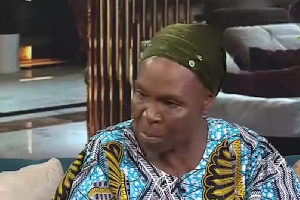Tamale, the capital of the Northern Region and one time "Rice City", now cannot boast of a single supermarket where one can confidently go and buy locally produced rice. All its markets, streets and supermarkets are flooded with all kinds of imported rice from America, China, Brazil, Vietnam and Thailand.
People are now asking what has happened to the rice industry? But the answers are not far-fetched. The 1975 National Best Farmer attributed the dwindling rice production in the Northern Ghana to the political instability in the country and the attitude of past governments to abandon good policies of their predecessors. If not, the valleys, the rice farmers and the labour force are still available, but what is lacking is the political will to mobilize resources, equipment and machinery for the farmers at affordable prices to go into rice production.
There was a time farmers in the three Northern Regions were driving Mercedes Benz cars to their farms, paying their medical bills and schools fees of their families, building new houses and marrying new wives to add value to their social lives and status. Indeed, Northerners were not poor and there was nothing like Kayayei business among the youth. Young girls could raise money to buy their needs from proceeds from their rice farms. The situation is different today; all that we eat now is imported rice.
Basuglo Dougah, alias No.1, the 1975 National Best Farmer, and praised the "Operation Feed Yourself Programme" of former Head of State like General I.K. Acheampong which turned the agricultural fortunes of the country into reality". He said: "I was the "Father Christmas" of my people, I single-handedly shouldered the cost of funeral rites, marital, education and health needs of my village through finances I obtained from the sales of rice".
He said he used to have six Massey-Ferguson tractors, four ford tractors, five combined harvesters, a Land Rover, Peugeot Caravan and a Peugeot saloon car and a Mack articulator. He lamented however that all these property had now become museum monuments.
Dougah said he used to engage about 100 farm hands on his 2,000-acre rice farm and produced between 13,000 and 14.000 bags of paddy rice every year, which he sold to the Bolgatanga Rice Mills. A bag of paddy rice was sold for 50 cedis 50 pesewas at that time.
He said the number of bags of paddy rice that he used to produce were more than what the rice farmers in the three Northern Regions now produce together.
But he says he is now a poor man. He owns a phoenix blue bird bicycle that he had been riding over the past ten years. He had also gone back to carpentry, a profession he abandoned and went into rice farming in the 1970s.
His five wives and 25 children had all abandoned him; he is now living a single life. He said what pained him most was that those he had helped when he was rich were now insulting him anytime they saw him. But "I am not daunted, because whenever I recounted the past success in life and the present failure, I get consoled that I have one time contributed my quota to the growth of the national economy". In fact he was the darling man of the Late General Acheampong.
He said: "My brother, the only consolation I have is that I am not the only one who is in this situation, we are many in the system. I am hoping one day the government will allocate me a tractor and I will bounce back to life".
Alhaji Abubakar Von Salifu, Northern Regional Chairman of the Rice Growers and Marketing Association, confirming the rice boom in Northern Ghana in the 1970s, said since the 1960s, the bulk of Ghana's rice had always been produced in the Northern Sector of the country.
He said rice production figures by West African Rice Development Agency (WARDA) in 1970 showed that 75 per cent of the rice produced in Ghana came from the Northern Sector with the Northern Region alone accounting for over 60 per cent.
He said the figures implied that the performance of rice production in the Northern Region translated into the national performance. In other words, poor performance in rice production in the Northern Region, affected the National figures.
Promoting rice production in Northern Ghana and the Northern Region in particular therefore would, no doubt, help the country to achieve its main agricultural policy objective of ensuring food self-sufficiency and food security.
Talking about the past state of the rice industry in Northern Region, Alhaji Von Salifu, who is also a chief, said in 1976, the country declared 99.2 per cent self-sufficiency in rice production. This was as a result of the launching of the "Operation Feed Yourself" (OFY) Programme in 1973 by General Acheampong's government, which focused on rice production, milling and marketing as a major agricultural policy.
He quoted the "Daily Graphic" story of 1974 to confirm the success of the "Green Revolution", which read, "No more does one come across a peasant rice farmer. Rice production has reached a stage where if not effectively controlled will get out of hand".
The story continued, "Rice farming has become a big business in the North. Everybody goes into rice farming, the big way", but sadly, this can not be said of the rice industry today.
Alhaji Von Salifu attributed the boost in rice production in the Northern Region in the 1970s to the favourable government policy, which provided the enabling environment for the development and growth of the industry.
Other factors were the vigorous research activities leading to the identification of rice varieties suitable for the ecological and agro-climatic conditions in the region, rapid development of an infrastructure support such as machinery and equipment, rice milling enterprises and institutional arrangement for seed multiplication, as well as adequate and regular supply of good quality seeds of recommended varieties.
Alhaji Von Salifu said the provision of agricultural machinery and equipment, tractors, combined harvesters, spraying machines and other inputs such as fertilizers and agro-chemicals all at subsidized prices helped enhance rice production.
Favourable agricultural loan schemes instituted by financial institutions, which were at low interest rates of between 10 and 19 per cent and the establishment of the Agricultural Development Bank, whose objective was to finance agriculture in the country, were among the good policies that the government adopted to boost rice production in the country, he said.
Alhaji Von Salifu also mentioned the establishment of engineering centres to service farm machinery and equipment, good management and conservation practices for farm machinery and equipment, the availability of technical expertise for the farmers, effective research, extension services to the farmers, farmers linkages, as well as the availability of stable markets and attractive producer prices for rice and the establishment of rice mills were also among the factors that helped boost rice production in the Northern Region.
Commenting on the state of the rice industry from 1980-2000, Alhaji Von Salifu said the industry in the Northern Region started to dwindle as a result of some reverse factors that helped the booming of the industry in the 1970s.
He said the virtual collapse of institutional arrangements for the cultivation, maintenance and seed multiplication contributed to the decline in rice production.
"For instance", he said, "since 1989, the Savannah Agricultural Research Institute (SARI), which is responsible for cultivation development and maintenance, breeding of new rice varieties, has not been able to develop and maintain new varieties due to financial constraints and inadequate scientific officers"
He said infrastructural support such as machinery and equipment, adequate input such as fertilizers, agro-chemicals, the break down of engineering service centres for farm machinery and equipment and the removal of subsidies on farm inputs had led to the abandonment of large-scale rice production.
Alhaji Von Salifu said the rapid rise in prices of inputs had rendered the rice industry less cost-effective and made it more difficult for farmers to repay their loans.
He noted that unfavourable agricultural loan schemes with exorbitant interest rates of between 36 and 46 per cent were discouraging farmers from going into rice production. Financial institutions, he said, were shying away from investing in the industry because of the risk.
He said the unrestricted trade liberalisation that had promoted the influx of imported rice into the country resulting in a reduced demand for locally produced rice, had contributed to the collapse of the rice mills.
Alhaji Von Salifu said even though more human resources had been injected into the agricultural sector, morale had dwindled due to poor remuneration and inadequate supply of logistics, adding that dissemination of extension packages such as technical expertise and innovations to farmers were irregular and inadequate.
Alhaji Von Salifu suggested that for the rice industry to be revamped various stakeholders in seed production should be made to play their proper roles by providing them with the needed logistics and making quality seed available to farmers to enhance rice production. He said essential inputs such as machinery and equipment, spare parts, fertilizers, agro chemicals agricultural credit among others should be made available and affordable on liberal credit terms to farmers.
There should also be regular training of rice farmers and agricultural extension officers on rice production techniques.
Efforts should be made to reduce rice importation, create ready market channels and promote consumption of locally produced rice, he added. Alhaji Von Salifu said the government should also set up processing and marketing facilities at the local and national levels and encourage both local and national rice brokers to invest in the rice business.
Inventory credit and grain banking should be extended to rice as it is being done to maize while efforts should be made to hasten the opening of machinery service centres to assist farm machinery owners.
For instance, most tractors and combined harvesters that were brought into the country in the 1970s for the rice revolution were now broken down mainly due to lack of spare parts.
Alhaji Von Salifu called on the government to provide large-scale irrigation systems and feeder roads to rice producing areas to facilitate the cultivation of the crop and its transportation from the farm to the marketing centres.
He urged the government to encourage foreign investors to come to the three Northern Regions and invest in the rice industry.
The government should also include rice production on the Presidential Special Initiatives (PSI) alongside cotton, sorghum and soyabean for these regions.
Opinions of Tuesday, 13 July 2004
Columnist: Public Agenda


















